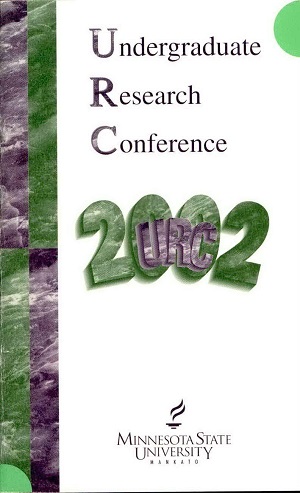Voluntary Gestational Exercise Decreases Body Specific Gravity and Increases Body Length in Young Rat Offspring
Location
CSU
Student's Major
Biological Sciences
Student's College
Science, Engineering and Technology
Mentor's Name
Penny Knoblich
Mentor's Department
Biological Sciences
Mentor's College
Science, Engineering and Technology
Description
Kidney weight, body weight, body specific gravity, and body length were examined in five-week-old offspring of Wistar-Kyoto (WKY) dams that exercised during gestation. Nineteen female WKY's were randomly assigned to 1 of 2 groups: exercise (E), and sedentary (S). Kidney weight (KW), body weight (BW), body specific gravity (SO), and body length (BL) were measured at 5 weeks of age. SO was measured by hydrostatic weighing. A one-way ANOVA with Bonferroni indicated post hoc analyses the female E offspring had significantly lower SO (p<0.05) than female S offspring. The male E offspring had significantly larger BL (p<0.05) than male S offspring. There were not significant differences in BW or KW. These results demonstrate moderate gestational exercise may generate a long-term positive benefit in progeny of exercised WKY dams with respect to body density, and gestational exercise may generate increased body lengths in the progeny. Supported by the College of Graduate Studies and Research.
Voluntary Gestational Exercise Decreases Body Specific Gravity and Increases Body Length in Young Rat Offspring
CSU
Kidney weight, body weight, body specific gravity, and body length were examined in five-week-old offspring of Wistar-Kyoto (WKY) dams that exercised during gestation. Nineteen female WKY's were randomly assigned to 1 of 2 groups: exercise (E), and sedentary (S). Kidney weight (KW), body weight (BW), body specific gravity (SO), and body length (BL) were measured at 5 weeks of age. SO was measured by hydrostatic weighing. A one-way ANOVA with Bonferroni indicated post hoc analyses the female E offspring had significantly lower SO (p<0.05) than female S offspring. The male E offspring had significantly larger BL (p<0.05) than male S offspring. There were not significant differences in BW or KW. These results demonstrate moderate gestational exercise may generate a long-term positive benefit in progeny of exercised WKY dams with respect to body density, and gestational exercise may generate increased body lengths in the progeny. Supported by the College of Graduate Studies and Research.



